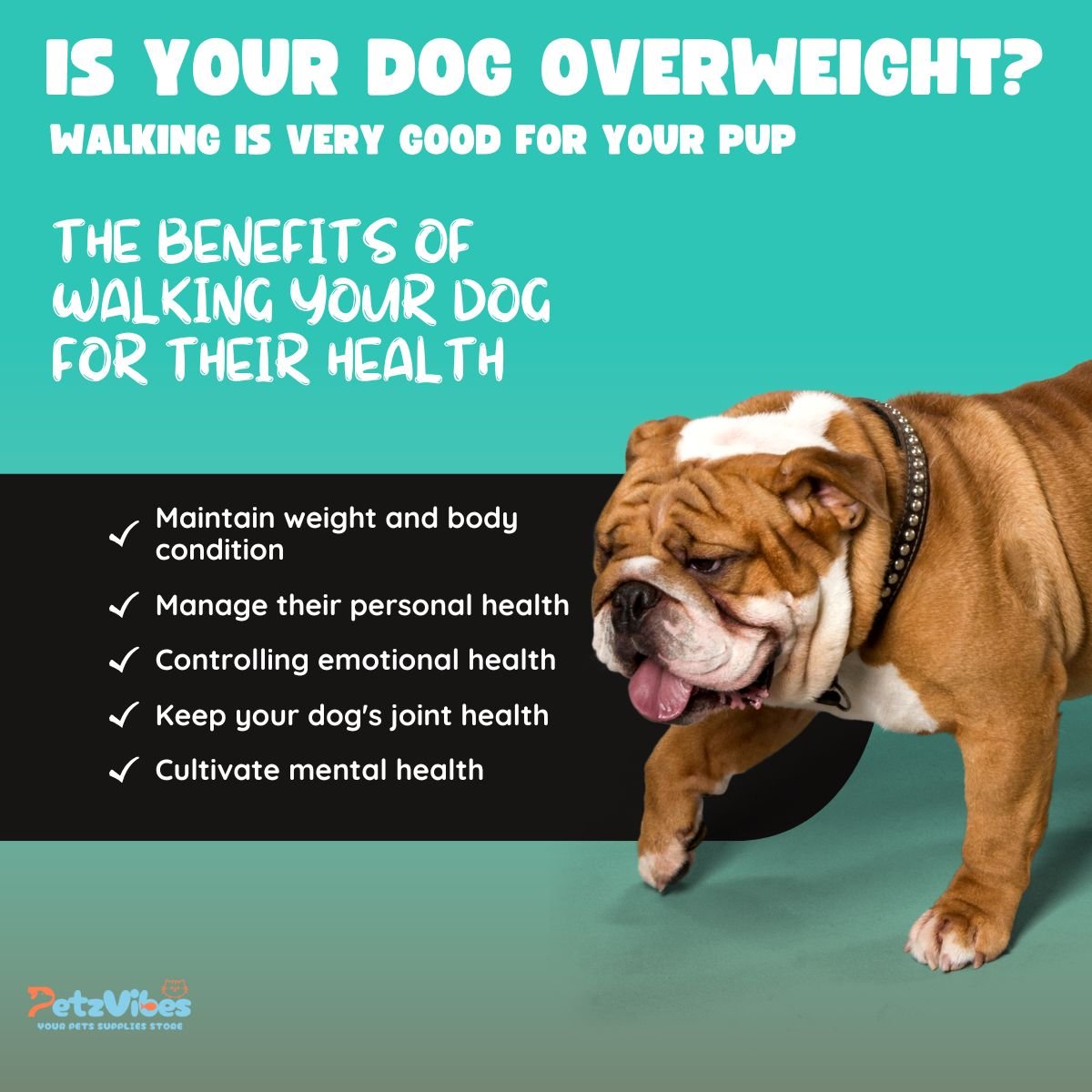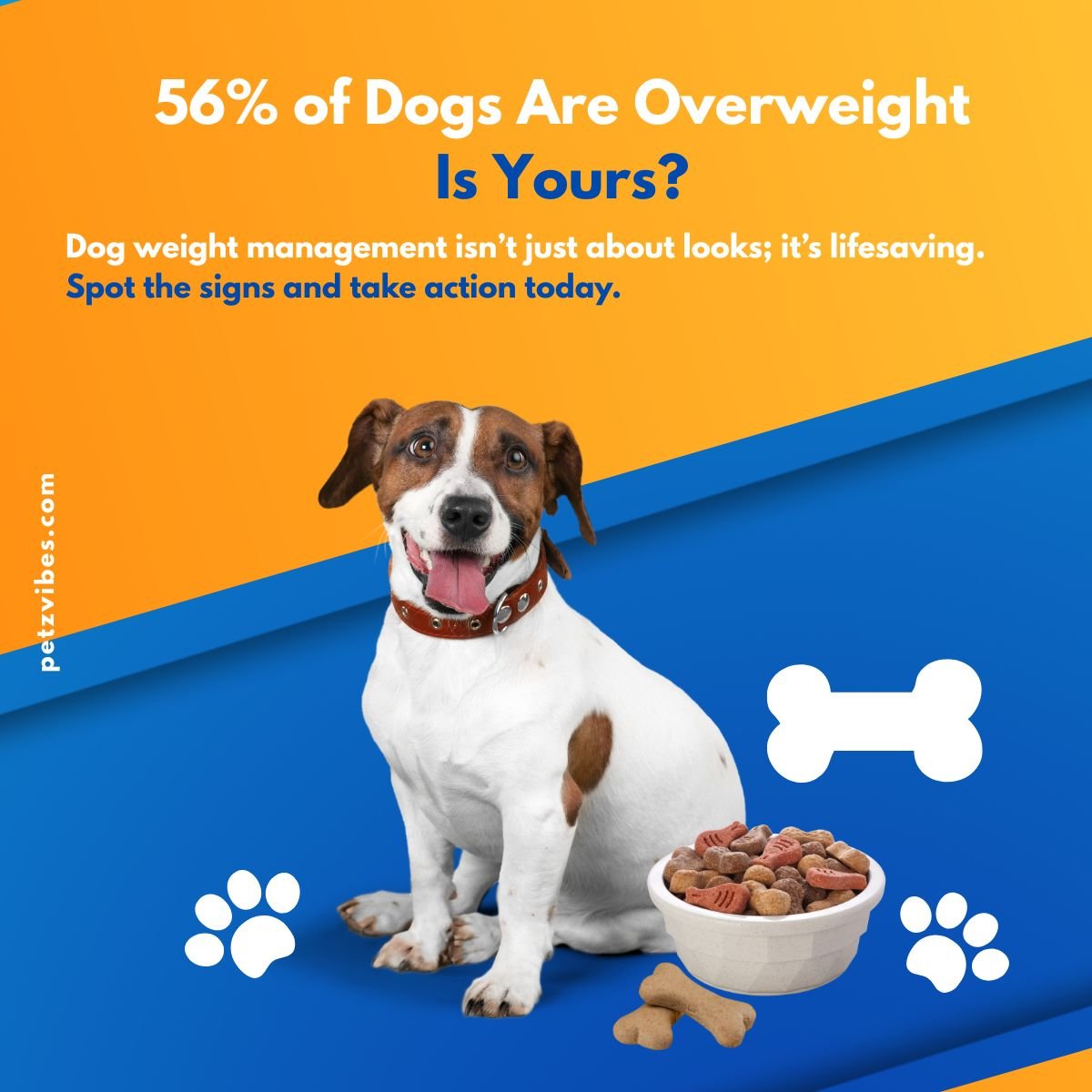Dog weight management is key to your pup’s health, but how do you know if they’re at their ideal size? An overweight dog faces risks like joint pain, diabetes, and a shorter lifespan, while an underweight one may lack energy and immunity. As a loving pet parent, you play the most significant role in keeping them fit. The good news? With the proper diet, exercise, and vet guidance, you can help your dog thrive at a healthy weight and enjoy more tail wags for years.
Dog Weight Management: Why is Important
Managing your dog’s weight is essential for their overall health and longevity. An overweight dog is at risk for a wide range of health complications, including diabetes, heart disease, arthritis, and decreased life expectancy. Understanding why weight management is crucial can help motivate you to maintain your dog’s fitness.
Health Risks of Overweight Dogs
Carrying extra pounds can severely affect your dog’s health. For example, excess weight can lead to joint problems, making it difficult for your pet to move and play. The added pressure on the joints can result in conditions such as arthritis. Furthermore, the risk of developing diabetes increases with unnecessary weight, leading to more complicated health issues.
Benefits of a Fit Pup
A healthy weight contributes to a dog’s vitality and energy levels. Fit dogs are more playful, engage more during walks, and are generally happier. Additionally, maintaining an appropriate weight can prevent many health issues, saving you potentially high medical costs.
Recognizing Ideal Weight for Dogs
Knowing what constitutes a healthy weight for your particular dog breed is the first step towards ensuring it stays fit. It’s essential to understand some common methods used to determine whether your dog is at its ideal weight.
Assessing Body Condition
The Body Condition Score (BCS) is an easy way to evaluate your dog’s weight. The scale typically ranges from 1 to 9, where 1 signifies an extremely underweight condition and 9 indicates severe obesity. By feeling your dog’s ribs (without applying pressure) and observing their waist and abdominal tuck, you can estimate their BCS.
Body Condition Score Table
| BCS Score | Description |
|---|---|
| 1-3 | Underweight |
| 4-5 | Ideal |
| 6-7 | Overweight |
| 8-9 | Obese |
Consulting Breed Standards
Breed standards provide guidelines on a typical healthy weight range for different breeds. While these standards offer a starting point, it’s important to remember that individual dogs may naturally vary.
Proper Nutrition for Weight Management
Nutrition plays a pivotal role in managing your dog’s weight. The types and amounts of food you provide directly impact their health and fitness. Let’s discuss how proper nutrition contributes to weight management.
Choosing the Right Food
Selecting high-quality dog food is crucial. Opt for foods that list meat as the first ingredient, and ensure they are free from artificial additives. Look for food designed for weight management; these formulas are typically lower in calories while providing all the necessary nutrients.
Portion Control
Overfeeding is a common mistake that can lead to weight gain. Be mindful of portion sizes, and consider your dog’s age, breed, and activity level when determining how much food to give. Check with your vet about the appropriate daily calorie intake for your pet.
Treats in Moderation
While treats can be useful training tools and expressions of love, they should be given sparingly. To manage their calorie intake, select low-calorie treats and reduce their normal meal portions accordingly.
Exercise: Keeping Your Dog Active

Like people, dogs need regular exercise to maintain a healthy weight and overall well-being. Exercise helps expend excess calories and keeps your dog’s heart, lungs, and joints in good condition.
Daily Exercise Needs
Every dog requires a different amount of exercise based on breed, age, and health condition. While some dogs thrive on extensive exercise, others may require a daily walk. Typically, dogs benefit from at least 30 to 60 minutes of exercise daily.
Fun Ways to Exercise Your Dog
Exercise shouldn’t be a chore for you or your dog. Incorporate fun activities like fetch, agility courses, or swimming. Enrolling your dog in regular playdates or dog parks is an excellent way for them to engage in physical activity while socializing.
Monitoring Your Dog’s Progress
Regularly monitoring your dog’s weight and health is key to successful weight management. Observing their growth and adapting their diet and exercise plans as needed ensures they remain in optimal condition.
Regular Weigh-Ins
Make it a habit to weigh your dog once a month to track its progress. Use a scale that can accurately measure its weight and help you see if any changes need to be made to its diet or exercise routine.
Keeping a Weight Journal
Documenting your dog’s weight, food intake, treats, and exercise helps you identify patterns or issues contributing to weight problems. This record will also be beneficial when discussing your pet’s health with your veterinarian.
Working with Your Veterinarian
Collaboration with your vet is invaluable when managing your dog’s weight. Veterinarians can offer personalized advice tailored to your dog’s needs and medical history.
Routine Check-Ups
Annual or bi-annual vet visits ensure that any health issues are caught early. Your vet can evaluate your dog’s weight and recommend diet, exercise, and lifestyle changes.
Tailored Weight Loss Plans
If your dog is significantly overweight, your vet may propose a tailored weight-loss plan. These plans often include specific food recommendations, safe exercise routines, and regular progress evaluations.
Conclusion
Maintaining your dog’s weight is integral to unlocking a happier, healthier life for them. Your pet can avoid the pitfalls associated with weight issues through proper nutrition, regular exercise, and consistent monitoring of their progress. By fostering a close relationship with your vet and actively engaging in your dog’s well-being, you can keep your furry friend healthy and thriving at any age.






